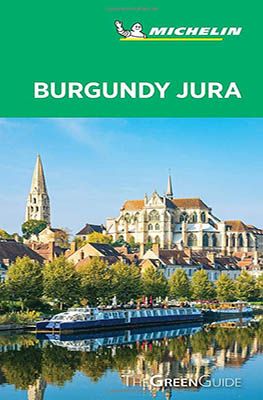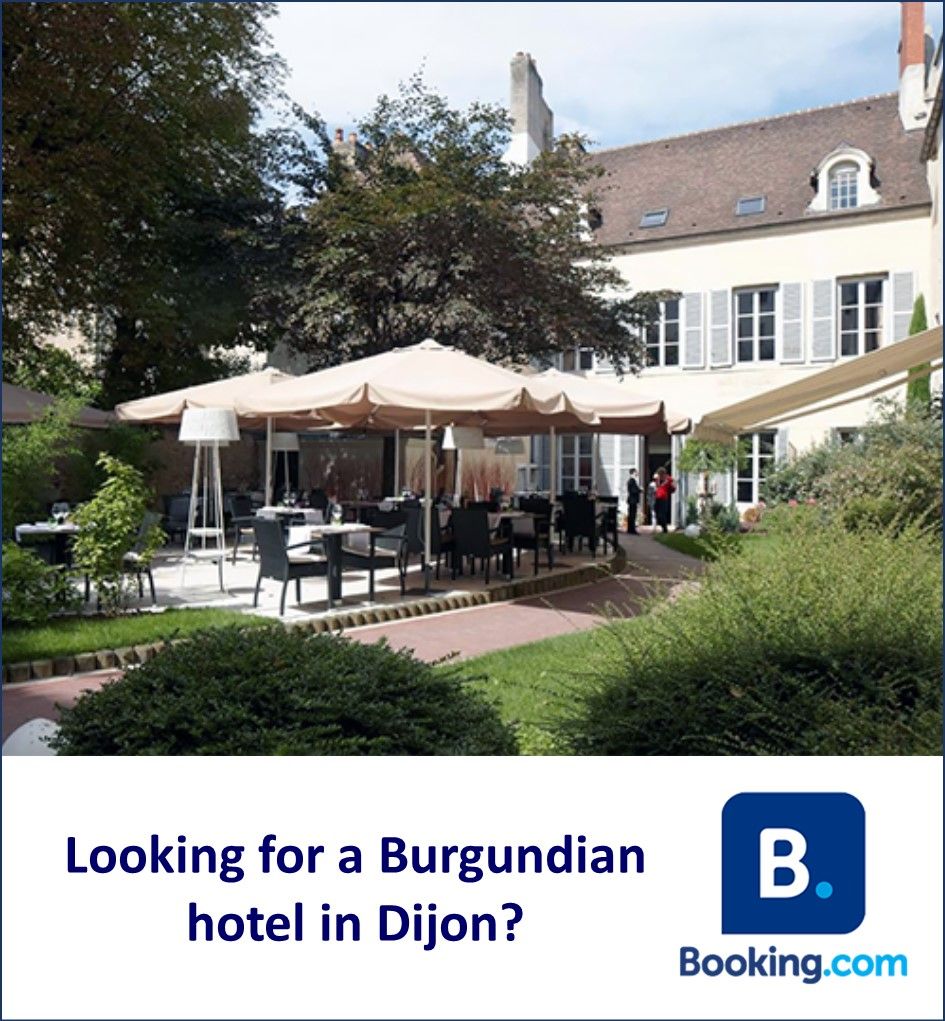Dijon is the largest city and also the capital of the eastern French region of Bourgogne-Franche-Comté. The city is best known to many for its mustard. Yet the tasty, vitamin-rich food has not been made there since 2009. Dijon is now primarily a UNESCO city with beautiful architecture and particularly rich history as well as a culinary hotspot, where you can enjoy arguably the best wines in France. In this blog, we give tips on which highlights you should not miss.
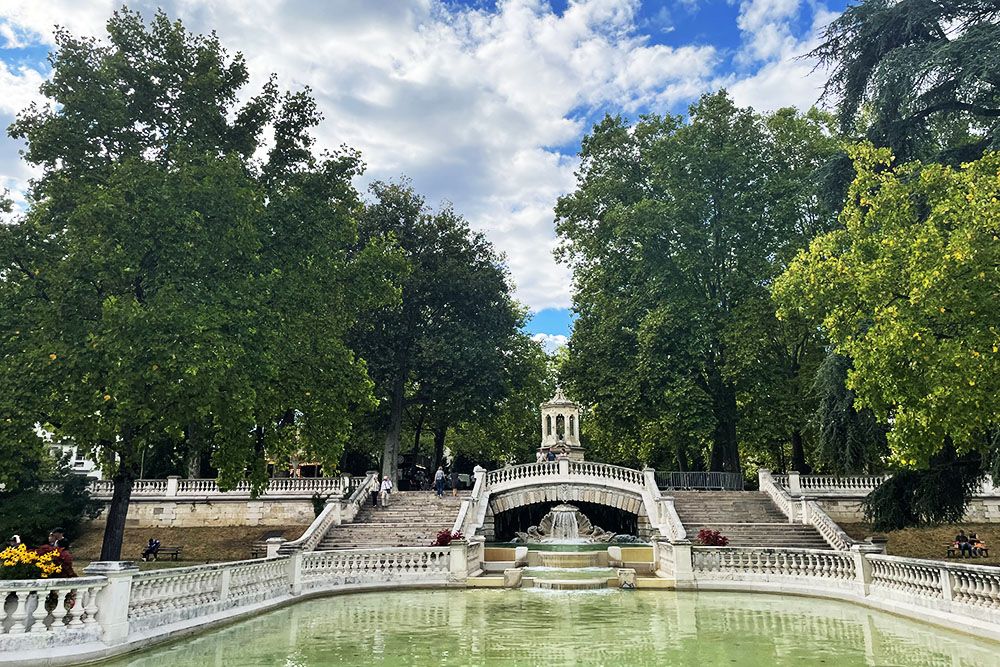
The Burgundian Dijon
In the 5th century, the East Germanic Burgundians founded a kingdom that was incorporated by the Franks a century later. The great Kingdom of Burgundy fell into three major parts in the late 9th century, including the Duchy of Burgundy. The independent duchy grew into a major power. In the 14th and 15th centuries, for instance, the duchy covered much of what is now north-eastern France, western Germany, Belgium and the Netherlands.
In the early 11th century, Dijon became the capital of Burgundy. Yet it took more than three centuries before the city really flourished. The dukes loved art and music. This also allowed Dijon to become an important centre of Gothic, early Renaissance music and painting and sculpture. At the end of the 15th century, the Duchy of Burgundy was annexed by France. However, Dijon remained the region’s prosperous capital. In the 18th, the city became a bishopric and the intellectual centre of France. This was also Dijon’s most prosperous period.
The city fell into decline after the French Revolution. But with the arrival of the railways in the mid-19th century, the city grew both in population and wealth. Today, Dijon is a bustling, cosmopolitan university town with a well-preserved and beautiful historic centre.
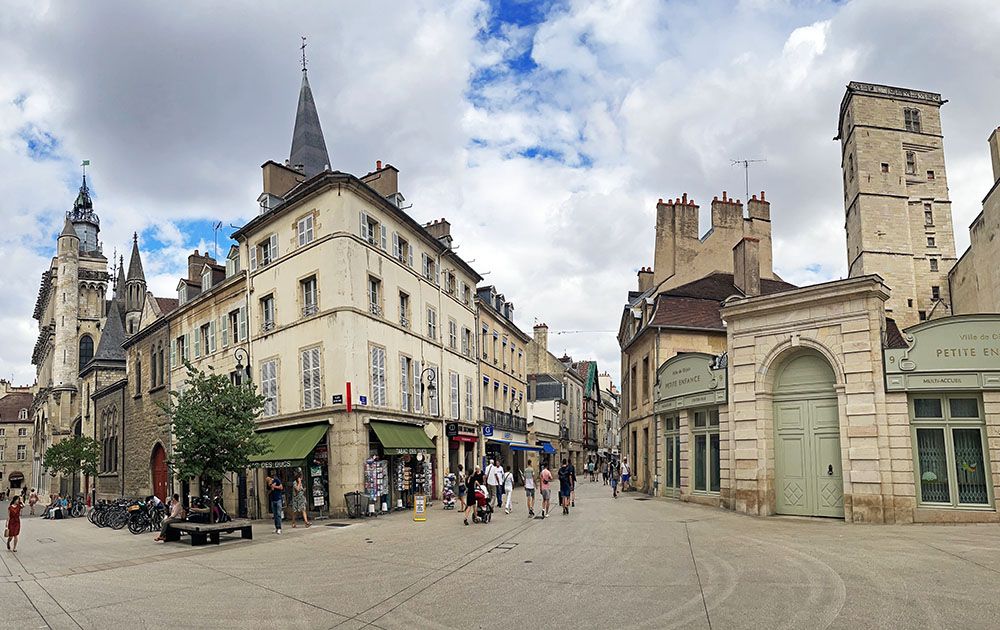
City walk through Dijon
There is an individually walkable city tour called Parcours de la chouette (owl trail). If you only have one day in Dijon, this is the route to walk to see most of the city’s sights. The signage is done with small bronze owls (the city’s symbol). You can literally find them on the streets. There are 22 in total.
You can get a guide to the route at the tourist office. If you have an Android phone, you can also download the app for about 3 euros.
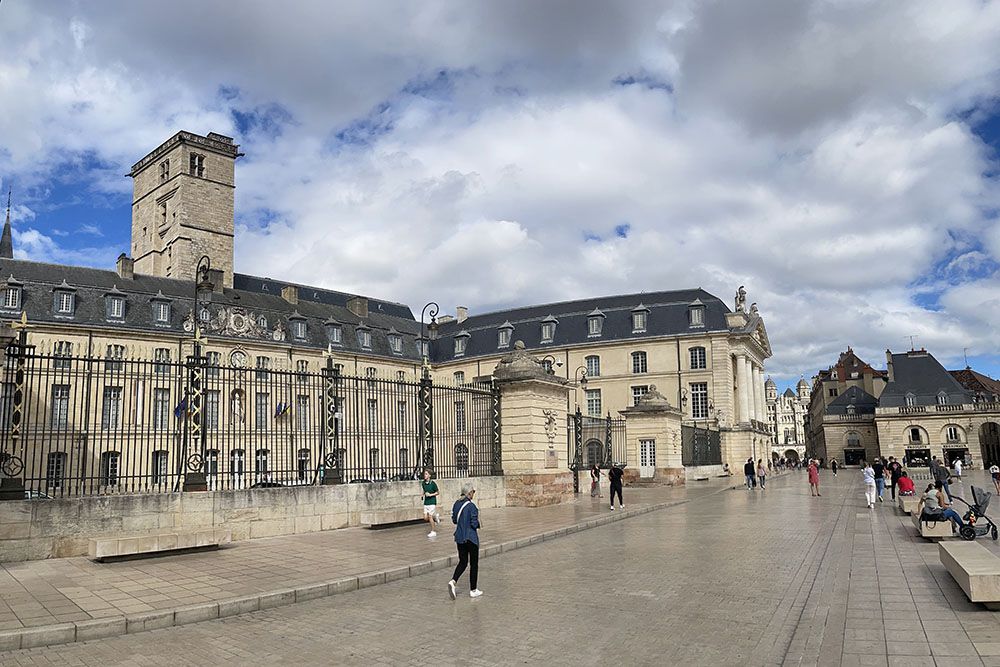
Top 8 sights not to miss in Dijon
Whether you follow the owl trail or not, the following sights should not be missing from your visit:
1. Palace of the Dukes of Burgundy
The palace of the Dukes of Burgundy was a simple fortress until the 14th century. Only in the 14th century was the fortress completely rebuilt by Duke Philip II the Bold. The successive dukes further expanded the structure into the present, stately palace.
The highlight of the building is the tower from the 15th century, which was built by Philip III the Good. This duke was one of the most powerful dukes of Burgundy. He ensured prosperity and prestige within the ever-growing duchy. You can climb the 46-metre-high tower. After taking 316 steps, you will be treated to a magnificent view of the city.
The palace now houses the city hall, the tourist information office and the Museum of Fine Arts, among others.
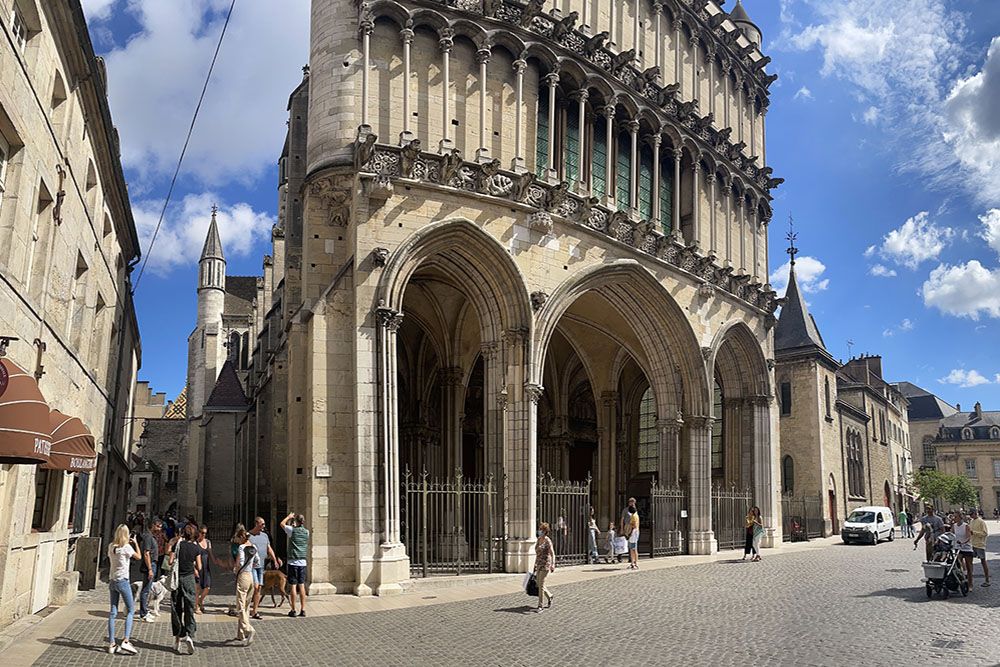
2. Église Notre Dame
The church of Notre Dame is a historical masterpiece in the heart of Dijon. The 13th-century church was built where there was previously a chapel. However, it was not until the 19th century that the building took on its current appearance. The church is beautiful to behold both inside and out. But the most striking part of the church is the so-called “Jacquemart” from Kortrijk: a clock on which the hours are struck fully automatically some mechanical puppets.
Another iconic thing about the church is the owl. It can be found on the north side of the church along the Uilenstraat. Pet the wooden owl with your left hand for your wish to come true.
3. Market Halles
Les Halles is the famous farmers’ market in Dijon. The covered market halls are located in the heart of the old town. You will find several stalls selling everything from meat and cheese to pastries and fresh fruit and vegetables.
If you are here at the weekend, enjoy brunch in the market halls where you will discover culinary Burgundian delights. Every Sunday, a different chef puts together a brunch menu in a lively, festive atmosphere.
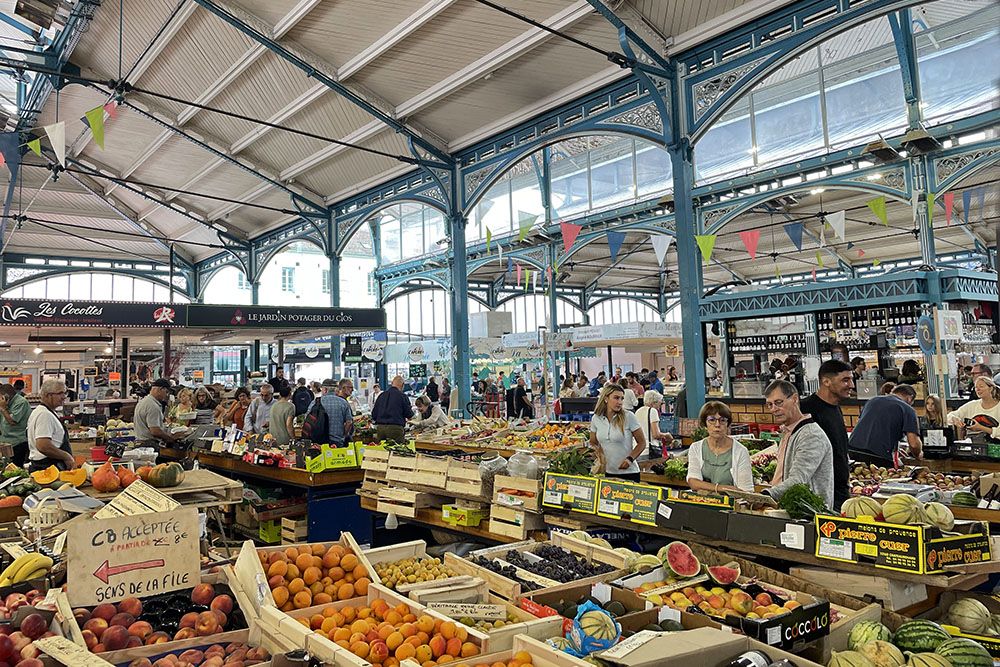
4. Museum of Fine Arts of Dijon
The Musée des Beaux-Arts (Fine Arts Museum) is located in the Palace of the Dukes of Burgundy. It has a permanent exhibition of medieval art. On the upper floor, there are many paintings by local artists and Flemish painters. The most famous part of the museum is the guardroom with tombs of the Dukes of Burgundy. The top floor has more recent art, including Picasso, Monet and Courbet.
5. Musée de la Vie bourguignonne Perrin de Puycousin
This museum, known as the Museum of Burgundian Life, is housed in a late 18th-century nunnery. You’ll find a wealth of furniture, household appliances and regional costumes, all displayed in a real-life context. You also have life-size, recreated shops that used to line the streets of Dijon. Such as a pharmacy, a grocery, a butcher, a clockmaker, a toy shop and so on. And of course, you also have a special exhibition dedicated to the history of mustard.
6. Rue des Forges
Dijon is synonymous with good food, great wines and the most delicious delicacies. The cobbled Rue des Forges is full of shops for real gourmets. This medieval street is also one of the city’s most beautiful streets from an architectural point of view. Take your time to stroll down this street. And treat yourself every now and then to an excellent glass of Burgundian wine in one of the many wine bars.
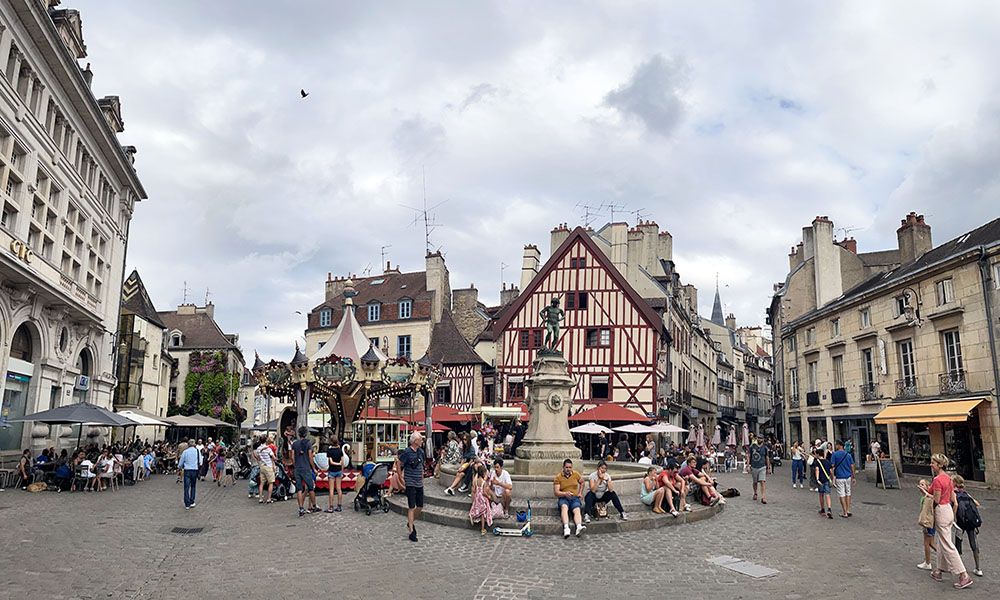
7. Lac Kir
In almost every city, we look for a beautiful park to escape the usually busy city centre for a while. In the west of Dijon, there is such a park at Lake Kir. A nice spot to relax or go for a walk. In summer, the lake is more of a party: the beach is transformed into a kind of seaside resort then including beach huts. You can even sail on the water. You also see a lot of people having late picnics there.
8. The Moutarderie
As mentioned earlier, Dijon is known to many as the city of mustard. Although the typical Dijon mustard has not been made there for a long time, you can still find authentic “moutarderies”, or mustard shops. One of our favourites is La Moutarderie Edmond Fallot, housed in a beautiful medieval half-timbered house on Rue de la Chouette. Another is La Maison Maille Dijon on Rue de la Liberté with a distinctive, stunning façade. Both shops have the standard, creamy Dijon mustard but also the grainy version. You can also go there for different flavours of mustard. Consider adding basil or green peppercorns, for example. Mayonnaise-based Dijon mustard is also popular.
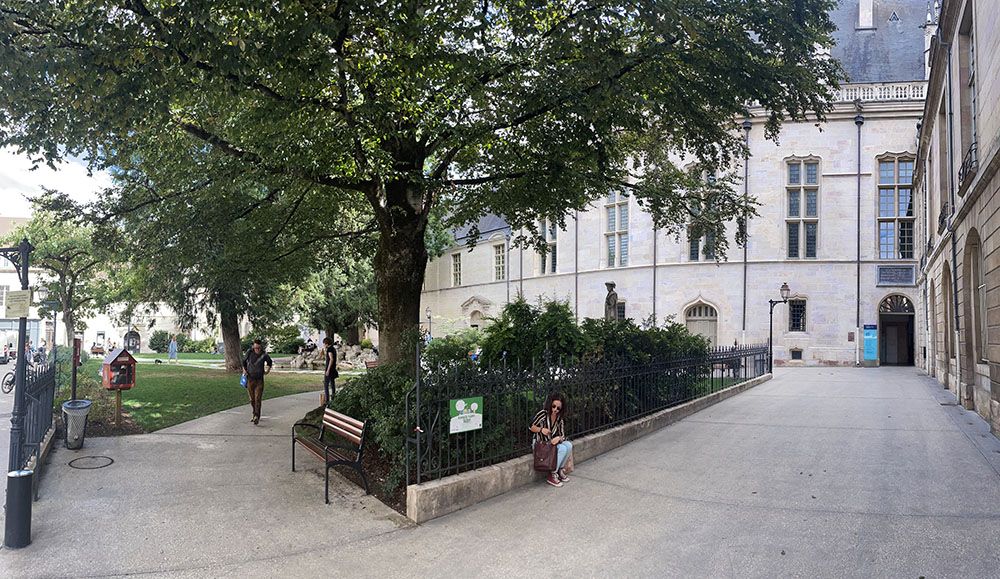
What to see and do near Dijon
Immediately south of Dijon is the so-called Côte d’Or: a wine region with many prestigious wineries. A large number of these are ‘Clos’, or walled vineyards. They are often located near fine country houses or even castles. Even if you have little with wine, these wineries are interesting to visit. But there is much more to experience in this region than just wineries and vineyards. You can read more about it in our separate blog on the Côte d’Or.
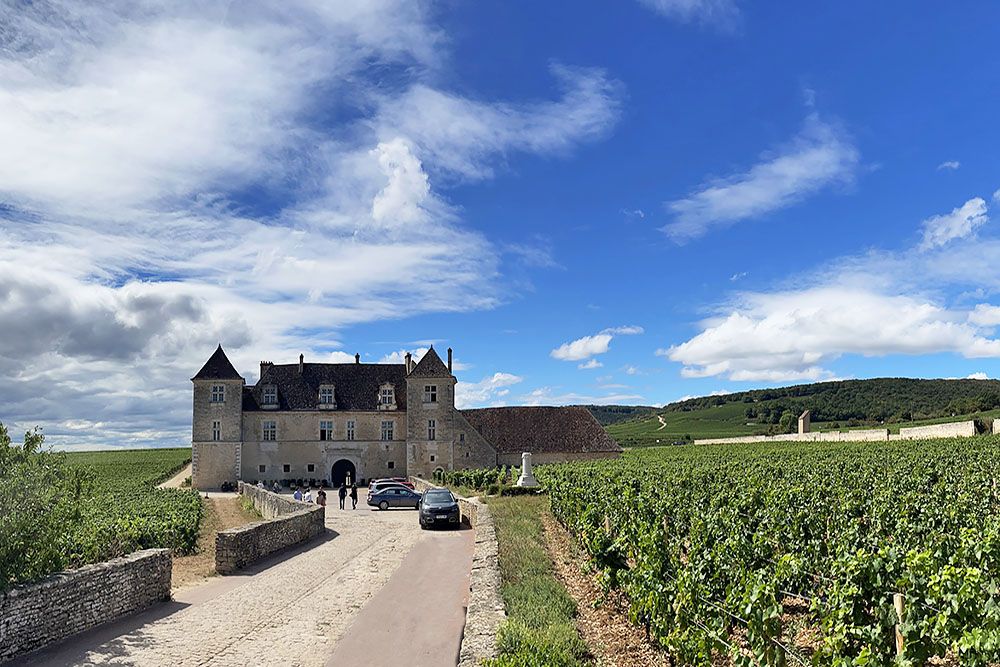
Answers to frequently asked, practical questions about staying in Dijon
You can easily reach Dijon by train. First take the train to Paris and then the TGV direct to Dijon Ville. While in Dijon, it's best to take a hire car if you also want to explore the Côte d'Or, the wine region around Dijon.
The city is fine to fully explore in one day. Do spend at least one night in Dijon to fully enjoy the vibrant, Burgundian life. If you are a wine lover, you will have to spend at least two nights in Dijon or the surrounding area. You really need a full second day to visit the wine villages on the Côte d'Or. Do you love hiking and visiting castles and other cultural highlights? Then spend a week in the area. Another tip: combine your stay in this region with a visit to the beautiful town of Beaune!
Dijon is excellent to explore by foot. So, leave your car at your hotel. Another option is to park your car in one of the many car parks. The first hour is usually not too expensive, but the longer you park there, the higher the hourly rate.
The best time period to visit Dijon is during spring and autumn. In summer, it can get fairly hot. Besides, it is busier with tourists during that period. Do you consider yourself a Burgundian? Then visit the city in autumn when the annual International Food Fair is held. During this large-scale event, you can get to know the culinary specialities of not only Burgundy but also many other countries.
Dijon mustard has become a household name because of its distinctive recipe: verjuice (unripened grapes) and high-quality ground brown mustard seeds, together with salt and other spices. Once, any product named Dijon mustard had to be made in the Dijon area. Nowadays, any mustard that uses the basic Dijon recipe may be called Dijon mustard.
Pretty much everywhere in Dijon! As far as our advice goes, just see if the menu appeals to you. Do you really want to eat exceptionally well without being out top dollar? Dijon is home to a particularly large number of relatively affordable restaurants with one or more Michelin stars. Or with a mention in the Michelin Guide. Check out the list of the best restaurants in Dijon here.
In Dijon, you have a wide choice of comfortable accommodation. More than half have private parking facilities and many also have a spa. Check out the overview of accommodation in Dijon here.
Special tours in Dijon
Book special tours with our partner GetYourGuide here. We earn a modest commission for your booking at no additional cost to you. The commission helps us maintain this travel blog.

